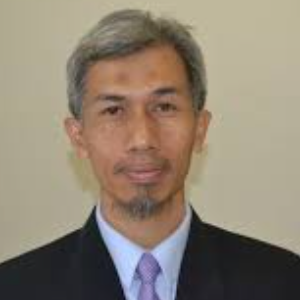Title : Climate change mitigation in sugarcane by transplanting on dry land
Abstract:
This research is concerned with the development of seedlings transplantion technology of sugarcane cultivation on dry land. The technology used comprised single bud chip seedlings, mycorrhizal arbuscular inoculation, climate change mitigation by transplanting and increasing the millable cane population by arragement of interrow spacing. This research aimed to ascertain the effects of mycorrhiza on growth, increase of sucrose content, crystal of sugar, and farmer income. Dry land research location was in Gunung Kidul, Yogyakarta Indonesia with limited soil moisture, no irrigation, six wet months per year. Seedlings transplanting was done when the rain is evenly distributed. The transplanting system will shorten the age of growth on dry land by about 40 days due to the germination phase for 40 days in the nursery. This is in contrast to the conventional planting with a stem with more nodes which requires 40 days to germinate phase in the field and the seed germination capacity is not yet known. The transplanting system prevents plants from water shortages during the growth phase, the tillering phase, and stem elongation because it is done in the rainy season. In the dry season, the plant goes into the maturation phase and sucrose accumulation in the stem. The seeds used are single bud chips that have the advantage that the seed volume is 80% more efficient than the stem with more nodes, simplifying the to arrangement of seedlings in transplantation by interrow spacing treatment, increasing the number of millable canes, forming the optimal clump angles (aged 3 months). The clump angle determines the productivity of 10.31%. To increase the growth capacity of seedlings transplaned on dry land, the seeds are inoculated with mycorrhiza in the nursery. Mycorrhiza enhances the growth of shoot roots (secondary roots) ie accelerates the emergence of roots, root length, root surface area, and number of secondary roots. The application of mycorrhiza also increased the biomass of seedlings, the weight of stem biomas by 11-61%. The percentage of mycorrhizal infections was correlated with the weight of stem biomass r2 = 0.54. Interrow spacing of 60 cm increased the yield of millable cane, sucrose content, sugar, and profit of farm operation compared with the system of stem planting with several nodes, respectively by 46.4%, 5.8%, 48.3%, and 122.5% with R/C ratio of 1.6. This treatment also had significant effects on specific leaf weight (SLW), leaf area, net assimilation rate (LAB), plant growth rate (PGR), light uptake, transpiration, leaf area index (ILD), lowest leaf proline level, and increase in the number tillers, number of stem nodes, stem diameter, plant height, clump angles, and millable canes per clump. Interrow spacing of 60cm resulted in productivity of 110 tons/ ha, crystal of sugar of 8.93 tons/ha. The clone type determines the interrow spacing. PS881 clone gave the best yield at 75cm interrow spacing with productivity of 123.45 tons/ha, higher gain 60.8% than the system of stem planting with several nodes, and R/C ratio 1.36.



